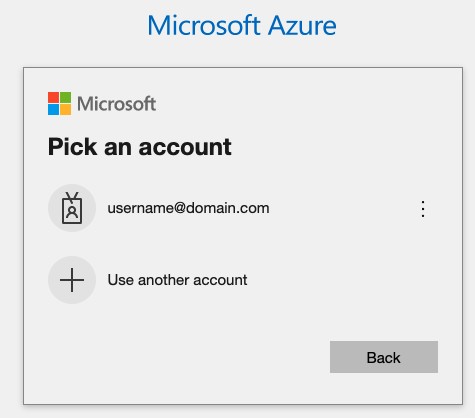Requirements
Microsoft Azure Account
HiveMQ License (optional)
If you do not have a valid HiveMQ license, the HiveMQ cluster uses a trial licence that allows up to 25 concurrent client connections and is limited to testing and evaluation purposes only. To obtain a HiveMQ licence that is suitable for production use, or request an evaluation licence that allows more connections, contact our customer service team. |
While creating this guide, our Kubernetes Version is v1.27.7, it might be different in your case
Azure CLI
The Azure command-line interface is used to create and manage Azure resources. In this procedure, you use the Azure CLI to create an Azure Resource Group with a Kubernetes cluster on the Azure cloud.
To install the Azure CLI on macOS with Homebrew, open a terminal and enter:
brew install az
For other operating systems, see Azure CLI installation.
kubectl
Kubectl is the official command-line interface for interacting with Kubernetes clusters. Here, you use kubectl to manage the created Kubernetes cluster on Azure.
Once you install Azure CLI, you can enter the following command to install kubectl on any operating system:
az aks install-cli
Helm
Helm is the most commonly used package manager for Kubernetes. Helm helps you easily define, install, and update the software that you run on a Kubernetes cluster. In this procedure, you use Helm to install and configure HiveMQ on your K8s cluster.
To install Helm on macOS with Homebrew, enter:
brew install helm
For other operating systems, see Helm installation.
MQTT-CLI
MQTT-CLI is an open-source command-line interface from HiveMQ that allows you to quickly simulate MQTT clients. Here, you use the MQTT-CLI to connect clients and interact with your HiveMQ cluster.
To install MQTT-CLI on macOS with Homebrew, enter:
brew install hivemq/mqtt-cli/mqtt-cli
For other operating systems, see MQTT-CLI installation.
Procedure
Set Up Your Kubernetes Cluster With AKS
To create a Kubernetes cluster on Azure with the Azure CLI, open a terminal and enter:
az login
A window to sign in to your Microsoft account opens in your browser:
After you successfully submit your credentials, a sign-in confirmation prints in your terminal.
Before you create the cluster, you need to select the region where the cluster is hosted. To view a list of all available locations, enter:
az account list-locations
Excerpt of Azure locations JSON
...
},
{
"displayName": "Germany North",
"id": "/subscriptions/661ab844-9998-4e03-b857-62ecbd9f34e8/locations/germanynorth",
"metadata": {
"geographyGroup": "Europe",
"latitude": "53.073635",
"longitude": "8.806422",
"pairedRegion": [
{
"id": "/subscriptions/661ab844-9998-4e03-b857-62ecbd9f34e8/locations/germanywestcentral",
"name": "germanywestcentral",
"subscriptionId": null
}
],
"physicalLocation": "Berlin",
"regionCategory": "Other",
"regionType": "Physical"
},
"name": "germanynorth",
"regionalDisplayName": "(Europe) Germany North",
"subscriptionId": null
},
...
To create an Azure Resource Group with all the necessary resources for your cluster, enter the following command with the desired location (in this procedure, we use germanywestcentral):
az group create --name hmqResourceGroup --location germanywestcentral
In case you get the following error , you can fix it by setting subscription for your account
The client XYZ with object id 'ABCD' does not have authorization to perform action 'Microsoft.Resources/subscriptions/resourcegroups/write' over scope or the scope is invalid. If access was recently granted, please refresh your credentials.
Code: AuthorizationFailed
Steps to fix the error:
1. go to subscriptions under your azure account and look for subscription ID
2. Run the following command to set subscription for your account:az account set --subscription subscriptionID
To create a four-node AKS-managed Kubernetes cluster in your resource group with the Azure virtual machine type Standard_A8_v2 (8 CPUs, 16 GiB RAM), enter the following command and wait until the process completes.
Processing time can vary:
az aks create -g hmqResourceGroup -n HiveMQCluster --node-count 4 --node-vm-size Standard_A8_v2
Your Microsoft Azure account bills you for all resources you create. |
To manage the resulting Kubernetes cluster with kubectl, download the access credentials of the cluster:
az aks get-credentials -g hmqResourceGroup -n HiveMQCluster
To verify that all four nodes are available, enter:
kubectl get nodes
The output from the command is similar to the following:
NAME STATUS ROLES AGE VERSION aks-nodepool1-37471664-vmss000000 Ready agent 5m44s v1.18.10 aks-nodepool1-37471664-vmss000001 Ready agent 5m50s v1.18.10 aks-nodepool1-37471664-vmss000002 Ready agent 5m47s v1.18.10 aks-nodepool1-37471664-vmss000003 Ready agent 5m47s v1.18.10
In case you do not see the right nodes, please check and fix the current context
Check the current context, this should be set to HiveMQCluster in this case
kubectl config current-contextFix the context
kubectl config use-context HiveMQCluster
